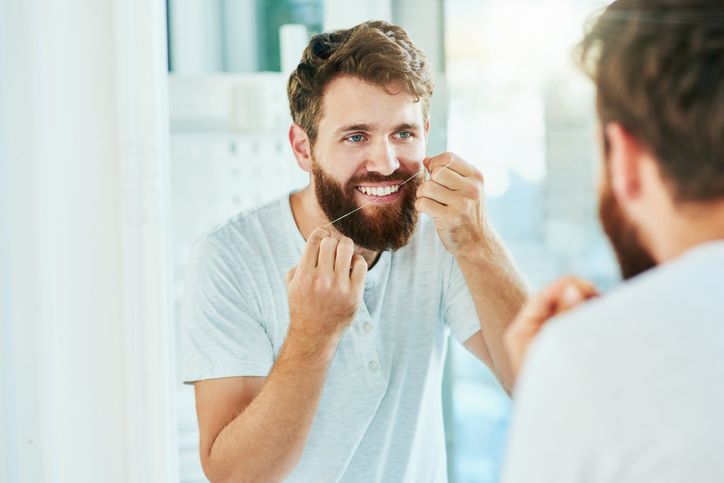Decoding Dental Terminology: All You Need to Know About Crowns, Bridges, and Implants
Why Understanding Restorative Dentistry Matters

Restorative dentistry plays an essential role in preserving your oral health when teeth are damaged, decayed, or missing. For many adults and families in the McMurray area, understanding the range of available treatments can make dental care decisions less overwhelming and more informed. Dental crowns, implants, and bridges are among the most common options used to restore both the function and appearance of teeth.
People seek restorative dental care for various reasons. In some cases, a tooth has been weakened by a large cavity or root canal. In others, injury or long-term wear may have affected the structure of one or more teeth. Tooth loss, whether from trauma, decay, or gum disease, can also lead patients to explore replacement options. Each situation is different, and knowing what each treatment involves can help patients have productive conversations with their dentist about the next steps.
In this guide, we'll break down what you need to know about dental crowns, dental bridges, and dental implants. You'll learn what each treatment is, when it might be used, how the procedure works, and what to expect in terms of care and longevity.
What is a Dental Crown?
A dental crown is a tooth-shaped cap-like covering that is placed over a weak or damaged tooth to restore its shape, size, strength, and appearance. It acts as a protective cap that allows the tooth to function normally again, especially when a filling alone isn't sufficient.
Crowns are often recommended in the following situations:
- A tooth that is severely weakened by decay
- A large filling has compromised the structure of the tooth
- The tooth has undergone root canal therapy
- A dental implant needs a prosthetic crown
- A bridge needs support from adjacent teeth
- A tooth is discolored or misshapen and affects the appearance
Materials Used for Dental Crowns
Dental crowns can be created from a range of materials that each have advantages, depending on the tooth’s location and the patient's needs. Porcelain and ceramic crowns are a popular option for front teeth because they can mimic the natural translucency and color of enamel.
Metal crowns, including gold and alloys, are highly durable and typically used for molars, where strength is more important than appearance.
Porcelain-fused-to-metal crowns can provide a balance between strength and looks, while zirconia crowns are becoming increasingly popular because of their natural- looking appearance and durability.
How the Procedure Works
Getting a dental crown will typically involves two visits. During your first appointment, the dentist prepares your tooth by removing decay and reshaping the tooth to make room for the crown. An impression will be taken to create a crown that fits precisely.
A temporary crown will protect your tooth while the permanent crown is being made. While wearing a temporary crown, be sure to avoid:
- Sticky or chewy foods
- Hard foods
- Flossing next to the crown. When flossing, slide the floss around the tooth rather than pulling it out.
- Chewing on the temporary crown. Avoid chewing on the temporary crown, and chew most foods on the opposite side of your mouth.
Once the permanent crown is finished, typically in one to two weeks, the dentist cements it into place. After the crown has been placed, patients can experience some pain or discomfort in the affected area. In many cases, this only lasts a few days and can be managed with ibuprofen. If you're unsure how to manage your discomfort or have pain that lasts for several weeks or is more severe, you should immediately contact your dentist.
In the first 24 hours with your new dental crown, it is typically recommended to avoid sticky foods to allow the crown to cement in place. After that, patients should be able to eat all types of foods with confidence.
It's important to remember that crowns can still be at risk for tooth decay. This is why it is critical to brush with fluoride toothpaste and floss carefully around each tooth twice a day.
Pros, Cons, and Longevity of Dental Crowns
Crowns offer several benefits. They strengthen weakened teeth, restore proper bite alignment, and improve the appearance of discolored or damaged teeth. However, they can be more expensive than simpler restorations and may occasionally become loose or need replacement.
With good care, including regular brushing, flossing, and dental checkups, most crowns last between 10 and 15 years. Some can last even longer, depending on the material and location in the mouth.
What is a Dental Bridge?
A dental bridge is a fixed dental restoration that is used to replace one or more missing teeth. It fills the space where teeth are absent by using the neighboring teeth for support. A bridge helps to maintain the alignment of your bite and prevents remaining teeth from shifting out of place.
How a Dental Bridge Works
The most common type is the traditional bridge, which is made up of one or more artificial teeth, also called pontics, held in place by dental crowns on the teeth closest to the gap. These crowns are bonded to the healthy teeth, which act as anchors. Other styles include the cantilever bridge, which is supported on only one side, and the Maryland bridge, which uses a resin-bonded framework instead of crowns.
For patients who are missing several teeth in a row, an implant-supported bridge may be the best solution. In that case, the bridge attaches to dental implants rather than natural teeth.
When Is a Bridge a Good Option?
A bridge may be recommended if a patient has one to three missing teeth in a row and desires a solution that restores function and appearance without extensive surgery.
Bridges utilize the strength of the adjacent natural teeth to anchor the restoration in place. For this reason, it's important that these supporting teeth are healthy and structurally sound. If they are already compromised by decay, gum disease, or large restorations, a different approach, such as implants or partial dentures, may be a better option.
A dental bridge is also a favorable choice for patients who prefer a non-surgical option. Unlike implants, bridges do not require incisions, bone integration, or extended healing periods. This can be appealing for individuals who are not comfortable with surgery, those who have medical conditions that affect healing, or those looking for a quicker restoration process.
In some cases, dental implants are not feasible due to bone loss that has occured in the jaw or health issues such as uncontrolled diabetes, immune disorders, or medications that impair bone healing. In these situations, a bridge can offer a stable and long-lasting alternative that restores chewing ability and helps prevent neighboring teeth from shifting into the gap.
Bridges may also be recommended for patients who want to avoid or delay the cost and complexity of implant placement, or for those whose jawbone is not strong enough to support an implant without undergoing bone grafting procedures. While not as long-lasting as implants, a well-maintained bridge can serve effectively for many years.
In short, a bridge may be the right choice if you:
- Are missing a small number of adjacent teeth
- Have strong, healthy teeth on either side of the gap
- Want a faster, less invasive solution
- Are not a candidate for implants due to health or bone density limitations
- Are looking for a cost-effective way to restore your smile
Your dentist can assess your oral health and help you determine if a bridge is the most appropriate option based on your goals, preferences, and the long-term outlook for your teeth and gums.
Procedure Overview for Dental Bridges
Like crowns, dental bridges are typically completed in two appointments. During your first visit, your dentist prepares the natural teeth on either side of the gap, known as the abutment teeth.
Preparing for the crown involves reshaping the teeth by removing part of the enamel to make space for the crowns that will hold the bridge in place. Once your teeth are prepared, the dentist takes impressions of your mouth to ensure that the final bridge fits precisely.
A temporary bridge is then put over the area to protect the exposed teeth and gums while the permanent bridge is being fabricated. It also helps you adjust to the feel of a bridge in your mouth.
The second appointment usually takes place one to two weeks later. During this visit, the dentist removes your temporary bridge, checks the fit of the permanent one, makes any needed adjustments, and then cements it into place.
Recovery and Aftercare
Recovery after bridge placement is typically minimal, but it’s normal to experience some mild sensitivity in the treated area for a few days. You may also need a short adjustment period to get used to the feeling of the new bridge while chewing or speaking.
Aftercare is essential to maintaining the lifespan and function of the bridge. Daily brushing and flossing remain essential, especially cleaning around the bridge and under the pontic (the artificial tooth that fills the gap). Your dentist may recommend tools, such as a special floss threader or an interdental brush, to help clean underneath the bridge where standard floss might not reach.
Avoid chewing ice or hard foods on the bridge, especially in the days following placement. Over time, regular dental checkups will allow your dentist to keep track of the health of the supporting teeth and ensure that the bridge remains stable and effective.
With proper oral hygiene and regular dental care, a dental bridge can provide you with many years of reliable function and a natural-looking smile.
Advantages and Considerations
Bridges restore chewing and speaking ability, support facial structure, and help distribute bite force evenly. They are less invasive than implants and are usually completed more quickly. However, they do require modification of the surrounding healthy teeth, and the lifespan of the bridge depends on how well those anchor teeth remain intact.
With consistent oral care, dental bridges can last 5 to 15 years. Special flossing tools may be needed to clean underneath the pontic.
What is a Dental Implant?
A dental implant is a permanent method for replacing missing teeth. It is a processa small titanium post is surgically placed into the jawbone to act as an artificial tooth root. After healing, the post is topped with a connector and a custom-made crown.
Components of an Implant
The complete implant system includes:
- Implant post: The titanium screw that integrates with the jawbone
- Abutment: A small connector piece between the post and the crown
- Crown: The visible, functional tooth replacement
Who is a Candidate for Dental Implants?
Implants are great for patients who are missing one or more teeth with healthy gums and sufficient bone density to support the implant. Patients with uncontrolled chronic conditions, smokers, or those with advanced bone loss may need additional treatment or alternative options.
The Surgical Process and Healing Time
The implant process occurs in several stages, each requiring its own healing period. It begins with a comprehensive consultation that may include dental X-rays or 3D imaging to evaluate bone density and determine whether the jaw can support an implant properly. If the jawbone is too soft or thin, a bone graft may be needed before implant placement.
Once the area is ready, the first step involves surgically placing the titanium implant post into the jawbone. This is usually performed under local anesthesia, and most patients experience only minor discomfort afterward. Swelling, bruising, and mild soreness are common in the first few days and can usually be managed with over-the-counter pain relievers and cold compresses. Soft foods are often recommended during this initial healing period.
The most important part of recovery happens over the next three to six months as the jawbone heals and gradually fuses with the implant in a process known as osseointegration. This bonding is what gives implants their long-term stability and strength. During this time, patients may wear a temporary crown or bridge to maintain appearance and function.
Once osseointegration is complete, a small connector called an abutment is placed on top of the implant. This may require a minor second procedure if the abutment wasn’t installed during the initial surgery. After the surrounding gum tissue heals around the abutment—usually within a few weeks—a custom crown is attached to complete the restoration.
Although the full process can take several months, most patients find that the improved function, appearance, and durability of a dental implant make it a worthwhile investment in their oral health.
Benefits and Limitations of Dental Implants
Dental implants closely replicate the function and appearance of natural teeth. They preserve jawbone structure, do not affect neighboring teeth, and are built to last for many years. Because they fuse with the bone, implants also prevent the bone loss that often follows tooth extraction.
However, implants do require a longer timeline, surgical intervention, and a higher upfront cost. Not all patients are eligible without additional procedures, such as bone grafting.
Crowns vs. Bridges vs. Implants: How to Choose?
Choosing between crowns, bridges, and implants depends on your dental needs, preferences, and long-term goals. Each restorative option comes with its own advantages, treatment timelines, and maintenance considerations. Here’s how they compare across several important factors:
Dental Crowns
- Used to restore a damaged or weakened natural tooth
- Placed over the existing tooth to protect and strengthen it
- Usually completed in two visits
- Lasts 10 to 15 years with the right care
- Requires no surgery
Moderate cost, depending on the material used and location in the mouth
Dental Bridges
- Used for patients replacing one or more missing teeth
- Anchored to neighboring teeth using crowns
- Typically completed in two to three visits
- Expected to last 5 to 15 years
- Considered a non-surgical option, though neighboring teeth are altered
- Moderate cost, usually less than implants but more than a single crown
Dental Implants
- Used to replace the entire structure of a missing tooth, including the root
- Supported by a titanium post embedded in the jawbone
- Requires a multi-step surgical process over several months
- Can last 15 years or longer, often for life, with good care
- Surgical procedure with a longer healing timeline
- Higher upfront cost, but often more cost-effective long-term
Factors to Consider When Selecting the Right Dental Solution
When deciding on the best restorative solution, it’s essential to think about your specific oral health needs and overall goals. The number and location of the teeth needing repair or replacement can influence which option makes the most sense.
For example, someone missing a single tooth may benefit from an implant, while multiple missing teeth might be better addressed with a bridge. The condition of the surrounding teeth and gums also matters, especially if they are being used to support a crown or bridge.
Your overall health and ability to heal should be considered, particularly when evaluating whether surgery is appropriate. Additionally, your comfort level with the treatment process, such as whether you prefer a non-surgical approach, can shape your decision. Finally, budget and dental insurance coverage play a practical role, as some options have higher upfront costs or limited coverage.
As you explore these options, it can be helpful to ask your dentist questions such as:
- Which option is most appropriate for my dental condition?
- What are the risks and benefits of each treatment in my case?
- How long is the recovery process for each solution?
- Will I need additional procedures, like bone grafting or root canals?
- How much of the treatment is likely to be covered by my insurance?
- What maintenance will each option require over time?
Discussing these questions with your dentist can help you weigh the options with clarity and confidence. Each person’s situation is different, and your provider can guide you toward the treatment that fits best with your oral health, preferences, and lifestyle.
FAQs About Restorative Dentistry
How long does each option last?
The longevity of a restorative dental solution depends on several factors, including the materials used by your dentist, your oral hygiene habits, and regular dental care. Dental crowns and bridges typically last 10 to 15 years, but they may last longer with excellent maintenance and minimal wear. Factors such as poor oral hygiene, teeth grinding, and lack of routine dental visits can shorten their lifespan.
Dental implants, on the other hand, are designed as a long-term solution and often last 15 years or more. In many cases, the titanium post can last a lifetime if the surrounding bone and gum tissue remain healthy. However, the crown on top of the implant may eventually need to be replaced due to normal wear.
Are implants painful?
The implant procedure is performed under local anesthesia, so patients will not feel pain during the surgery. Some mild discomfort is normal after the anesthesia wears off. This may include swelling, bruising, or soreness at the implant site, similar to what one might experience after a tooth extraction.
Most patients manage this discomfort with over-the-counter medications like ibuprofen or acetaminophen and resume normal activities within a day or two. In cases involving multiple implants or additional procedures like bone grafting, the recovery may involve more post-operative care, but severe pain is uncommon.
Can I eat normally with a crown or bridge?
Yes, most people can return to their usual eating habits once they’ve adjusted to their new crown or bridge. During the first few days, it’s a good idea to stick to softer foods while your mouth adapts to the restoration. After that, you can enjoy a wide variety of foods.
However, dentists often advise avoiding very hard, crunchy, or sticky items, such as hard candies, popcorn kernels, or chewing gum, especially if the crown or bridge is in a high-stress area. With proper care, your restoration will function much like a natural tooth.
What’s the recovery like for implants?
Recovery after implant placement happens in stages. Immediately after surgery, patients may experience mild swelling, tenderness, or minor bleeding around the implant site. This usually subsides within a few days, and most patients feel well enough to return to work or school within 24 to 48 hours. However, the implant itself must undergo osseointegration, where the bone fuses with the implant post.
This process can take three to six months, depending on the individual’s healing ability. During this time, patients receive a temporary crown or appliance to maintain aesthetics and function. Once the implant is fully integrated, the permanent crown is placed.
Does insurance cover any of these treatments?
Dental insurance coverage varies significantly by provider and plan. In general, crowns and bridges are often partially covered under restorative benefits, especially when they’re considered medically necessary. The percentage covered can range from 40% to 80% after the deductible is met. Dental implants are less frequently covered, as some insurance plans categorize them as elective procedures.
However, coverage is becoming more common as implants are increasingly recognized for their long-term benefits. Some insurance plans may cover portions of the implant process, such as the crown or abutment, even if the surgical placement of the post is excluded. It's best to check with your insurance provider in advance and ask your dentist for a detailed treatment plan and cost estimate to review what may be eligible for reimbursement.
Restorative Dentistry Options at Severns Dentistry & Orthodontics
At Severns Dentistry, we focus on practical, evidence-based solutions to restore your oral health. Whether you're considering dental crowns, bridges, or implants, our team provides detailed information and personalized care to help you make the best decision for your needs.
If you're exploring restorative dentistry options in McMurray, we invite you to schedule a consultation. We’re here to answer your questions and walk you through your choices, so you can feel confident about your smile, now and in the future.

Author:
Natalie Severns, DMD
Upon graduating from the University of Pittsburgh School of Dental Medicine, Dr. Severns specialized in Orthodontics and Dentofacial Orthopedics at the University of Pittsburgh School of Dental Medicine. She then did an externship in London, England, at the prestigious Guy’s Hospital. At this hospital, she learned top therapies in Dentofacial Orthopedics to provide her patients with the best possible facial esthetics.
Blog










